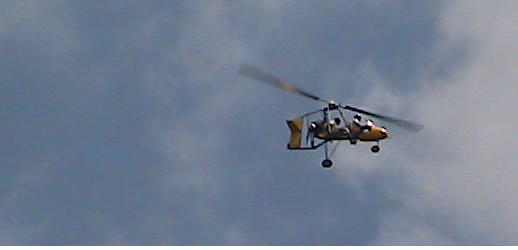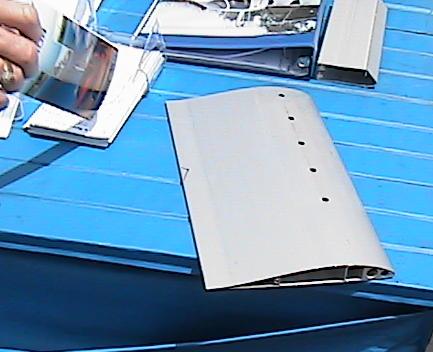|
Gyroplane Rotor Blades
The free-spinning rotor blades of the gyroplane is what sets itself apart from all other aircraft. While gyroplane rotor blades look like those found on helicopters there are some notable differences. A gyroplanes rotors tend to be of smaller cord and longer span than those used on helicopters. Because the rotor on a gyroplane must be in autorotation we need not only enough area to produce lift but the rotor has to have enough energy to rotate as well. A gyroplane rotor blade typically is shaped very much like a wing airfoil where a helicopter rotor blade is more symmetrical between the top and bottom. This is because a gyroplane rotor is intended for lift and a helicopters blades are designed for hover efficiency. Gyroplane rotor blades have been made from bamboo & fabric, wood, metals and composites. These materials have been used on many different types of rotor systems and with different manufacturing methods. Rotor blades are very strong in tension (when spinning) but are somewhat fragile when static. Use care when installing, removing and taxiing as excessive loads can permanently damage your rotor blades. Dirt, bugs and abrasion can seriously affect the efficiency of all rotor blades. Follow the manufacturers recommendations for cleaning and maintaining your rotor blades for peak performance. Don't be surprised if some manufacturers recommend a light application of a light oil to your rotor blades as this keeps bugs from sticking and provides some moisture protection. Too much or too heavy an oil and blade efficiency will be reduced as dirt will be retained by the heavy oil. Some manufacturers may tell you to wax the rotor blades and others say to just wash with soap and water. Just do what they say and know that dirty rotor blades are not as efficient as clean rotor blades. When looking over your rotor blades pay particular attention for cracks, damage, or corrosion and delamination at the root, tip, leading and trailing edges and the doublers. The root is the end that attaches to the hub. The tip is most outboard. I think the leading and trailing edges speak for themselves. The doublers (if any) are located at the root end and is a series of layered material to add strength at the root fitting. Be sure to safely store and secure rotors not installed on the gyroplane to protect them from damage. Take good care of your rotor blades and they will take good care of you. With all this rotorhead talk I want something about tails so let's look at the Rudder.
|


